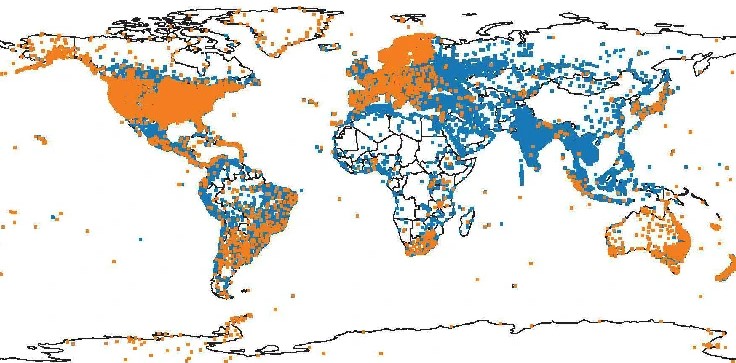
27 Nov 2024
Collected at: https://physicsworld.com/a/millions-of-smartphones-monitor-ionosphere-dynamics/
A plan to use millions of smartphones to map out real-time variations in Earth’s ionosphere has been tested by researchers in the US. Developed by Brian Williams and colleagues at Google Research in California, the system could improve the accuracy of global navigation satellite systems (GNSSs) such as GPS and provide new insights into the ionosphere.
A GNSS uses a network of satellites to broadcast radio signals to ground-based receivers. Each receiver calculates its position based on the arrival times of signals from several satellites. These signals first pass through Earth’s ionosphere, which is a layer of weakly-ionized plasma about 50–1500 km above Earth’s surface. As a GNSS signal travels through the ionosphere, it interacts with free electrons and this slows down the signals slightly – an effect that depends on the frequency of the signal.
The problem is that the free electron density is not constant in either time or space. It can spike dramatically during solar storms and it can also be affected by geographical factors such as distance from the equator. The upshot is that variations in free electron density can lead to significant location errors if not accounted for properly.
To deal with this problem, navigation satellites send out two separate signals at different frequencies. These are received by dedicated monitoring stations on Earth’s surface and the differences between arrival times of the two frequencies is used create a real-time maps of the free electron density of the ionosphere. Such maps can then be used to correct location errors. However, these monitoring stations are expensive to install and tend to be concentrated in wealthier regions of the world. This results in large gaps in ionosphere maps.
Dual-frequency sensors
In their study, Williams’ team took advantage of the fact that many modern mobile phones have sensors that detect GNSS signals at two different frequencies. “Instead of thinking of the ionosphere as interfering with GPS positioning, we can flip this on its head and think of the GPS receiver as an instrument to measure the ionosphere,” Williams explains. “By combining the sensor measurements from millions of phones, we create a detailed view of the ionosphere that wouldn’t otherwise be possible.”
This is not a simple task, however, because individual smartphones are not designed for mapping the ionosphere. Their antennas are much less efficient than those of dedicated monitoring stations and the signals that smartphones receive are often distorted by surrounding buildings – and even users’ bodies. Also, these measurements are affected by the design of the phone and its GNSS hardware.
The big benefit of using smartphones is that their ownership is ubiquitous across the globe – including in developing regions such as India, Africa, and Southeast Asia. “In these parts of the world, there are still very few dedicated scientific monitoring stations that are being used by scientists to generate ionosphere maps,” says Williams. “Phone measurements provide a view of parts of the ionosphere that isn’t otherwise possible.”
The team’s proposal involves creating a worldwide network comprising millions of smartphones that will each carry out error correction measurements using the dual-frequency signals from GNSS satellites. Although each individual measurement will be relatively poor, the large number of measurements can be used to improve the overall accuracy of the map.
Simultaneous calibration
“By combining measurements from many phones, we can simultaneously calibrate the individual sensors and produce a map of ionosphere conditions, leading to improved location accuracy, and a better understanding of this important part of the Earth’s atmosphere,” Williams explains.
In their initial tests of the system, the researchers aggregated ionosphere measurements from millions of Android devices around the world. Crucially, there was no need to identify individual devices contributing to the study – ensuring the privacy and security of users.
Williams’ team was able to map a diverse array of variations in Earth’s ionosphere. These included plasma bubbles over India and South America; the effects of a small solar storm over North America; and a depletion in free electron density over Europe. These observations doubled the coverage are of existing maps and boosted resolution when compared to maps made using data from monitoring stations.
If such a smartphone-based network is rolled out, ionosphere-related location errors could be reduced by several metres – which would be a significant advantage to smartphone users.
“For example, devices could differentiate between a highway and a parallel rugged frontage road,” Williams predicts. “This could ensure that dispatchers send the appropriate first responders to the correct place and provide help more quickly.”
The research is described in Nature.

Leave a Reply